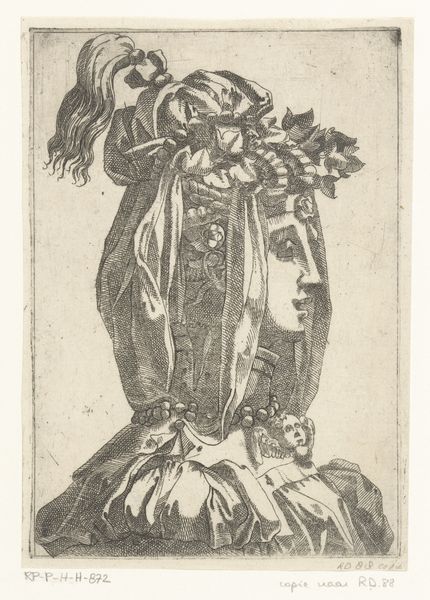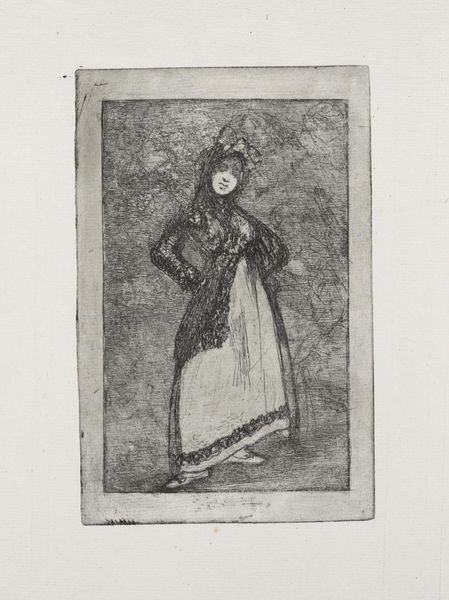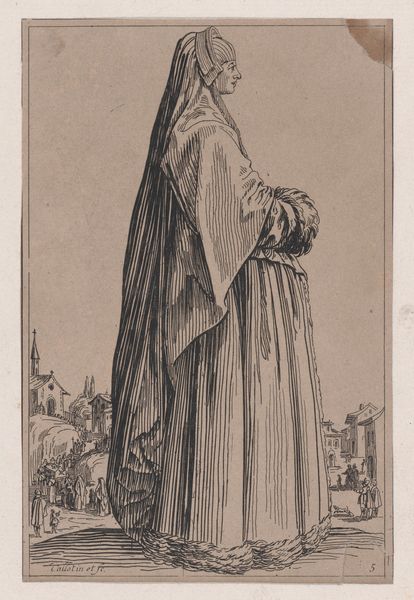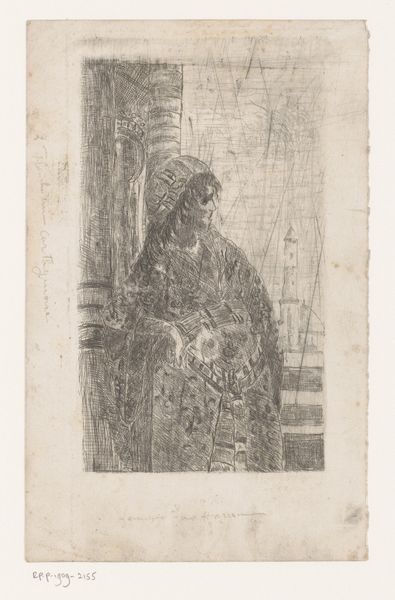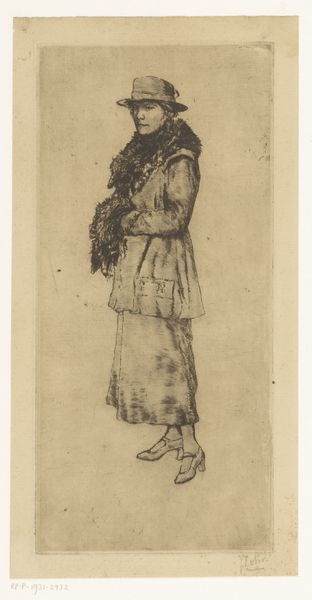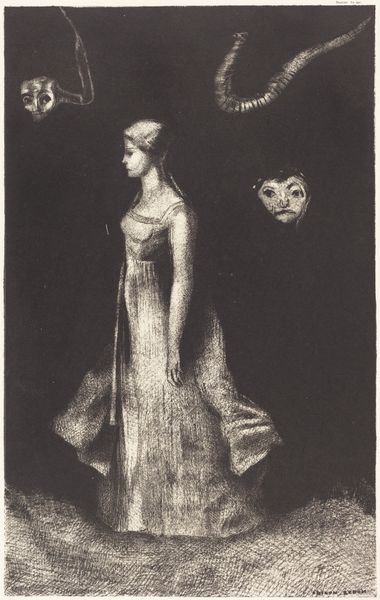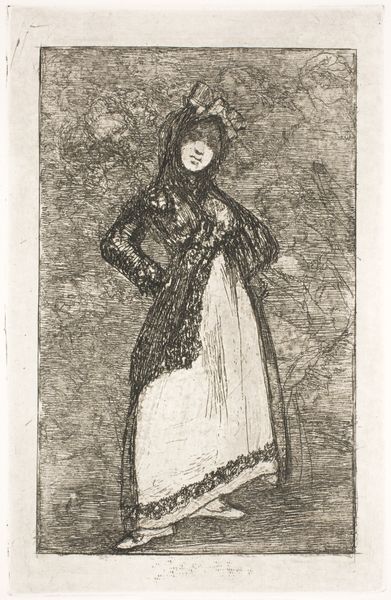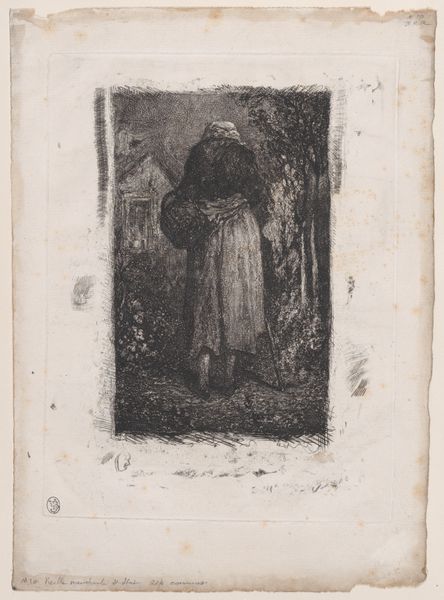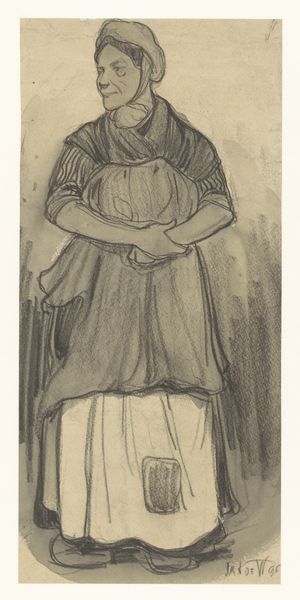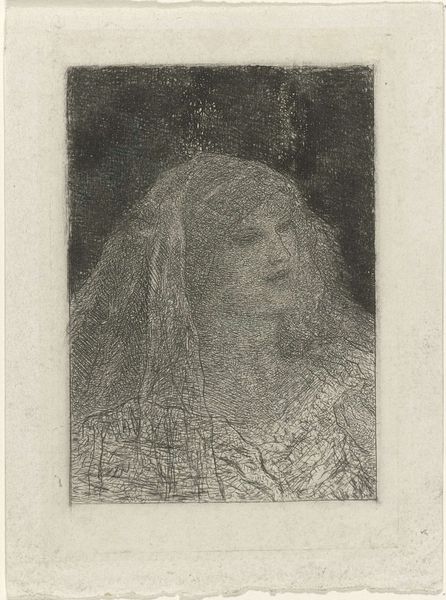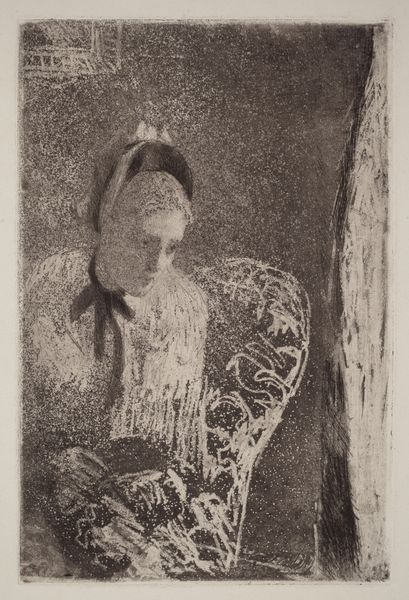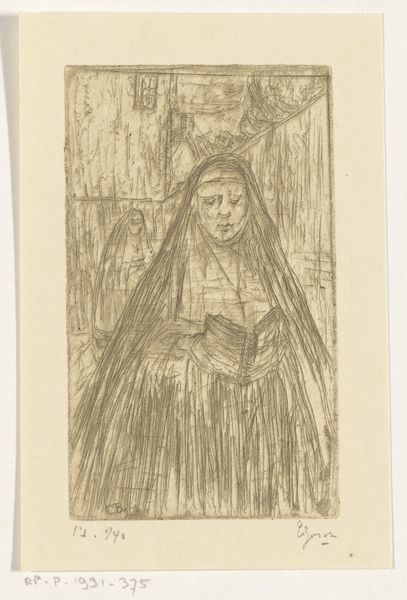
drawing, print, etching, paper
#
portrait
#
drawing
# print
#
etching
#
figuration
#
paper
#
france
#
portrait drawing
Dimensions: 103 × 65 mm (plate); 213 × 153 mm (sheet)
Copyright: Public Domain
Curator: Rodolphe Bresdin’s etching, “Woman in Fantastic Medieval Costume,” invites us into a world of delicate lines and shadowy depths. I find it overwhelmingly sad. The woman seems weighed down, somehow, by the sheer intensity of the artist's meticulous technique and her elaborate garments. Editor: Indeed, that pensive, melancholic aura practically radiates from the figure. Given Bresdin's artistic interest in representing the lives of marginalized people, I find myself wondering about her role and positioning within society. Costume can signify position, or the opposite. Curator: That costume, though, it’s pure fantasy, isn’t it? He drapes her in this historical pastiche, transforming her into a character. The lace and the pearls, the almost suffocating drapery… it’s both beautiful and claustrophobic. Editor: Right, the historicity is invented; but what if these costumes speak less to actual historical representation, and more to this interest in fantasy, dreams and symbolism common throughout the 19th century? The imagined medieval past here acts as a vehicle. The piece isn't just about dressing up, but maybe more about social commentary? Curator: I agree. And then there's that extraordinary etching technique of Bresdin’s, right? The pure obsessiveness. It’s like he's building up layers of feeling with each tiny line. Editor: Definitely. If you look closely, that density becomes almost palpable. I'm thinking how these dense networks of lines contribute to a heightened emotional intensity; and furthermore, how those kinds of prints would have made artworks such as this, far more publicly accessible. Curator: Making Bresdin's imagined histories something accessible to a larger number of people. Which really changes our understanding of his social commentary and artistic process. Editor: It gives me much food for thought about the role of art as a political agent in nineteenth-century France, offering critiques and commentary through carefully constructed, publicly accessible imagery. Thank you for drawing out so many fascinating points in this artwork. Curator: Absolutely! The pleasure was all mine! I think I understand my response so much more thanks to you, and your points on how artwork becomes publicly accessible made me view Rodolphe Bresdin’s intentions under a new light.
Comments
No comments
Be the first to comment and join the conversation on the ultimate creative platform.
